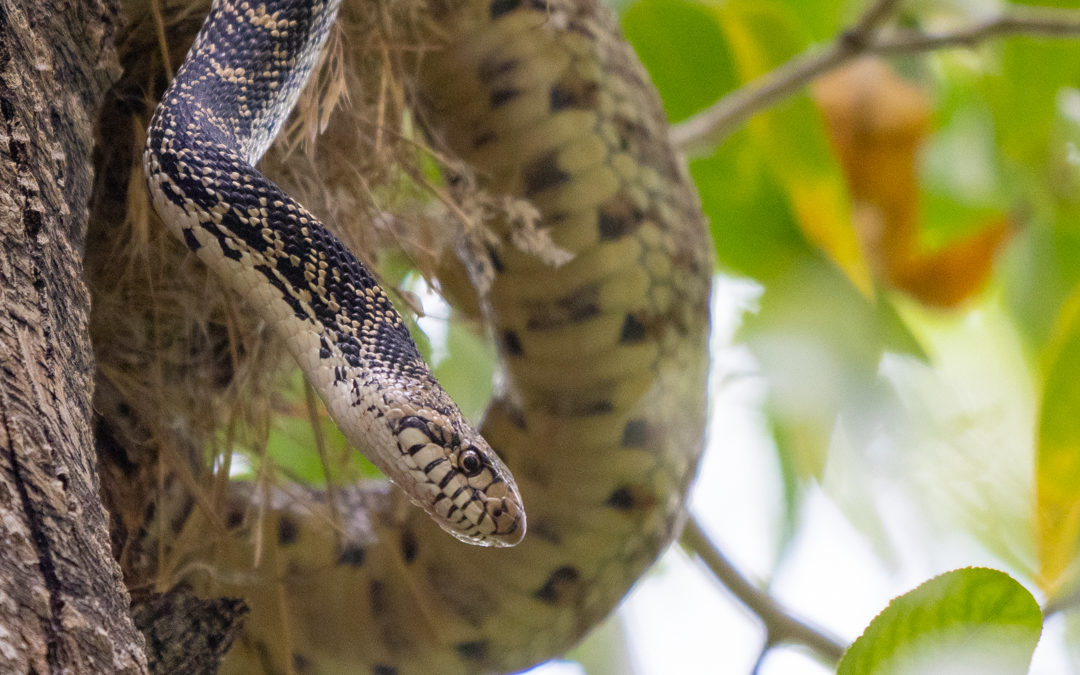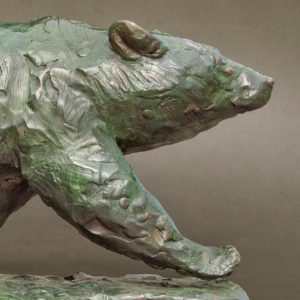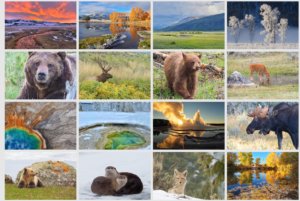Suddenly, dinner stopped.
Our evening meal often gets sidetracked when we dine on the porch; it seems we are always interrupted. and to be honest, this is a big part of why we patronize our own outdoor cafe. Disruptions may come as a momentary pause as a processional of elk cows and calves traverse the lower yard, on other occasions it might be a collection of ravens and eagles circling high overhead and still, on others, our forks halt halfway to our lips as a hummingbird zooms up to the hanging flower baskets.
Tonight, the robins were in a tizzy in the “tree palace”—a dense island of cottonwood trees just off the southwest corner of the house.
Hearing robins alarming is not terribly uncommon, and at first we were inclined to continue eating and leave the robin drama to mystery this time around. At least we tried to, anyway. As the frenzy of robin alarm calls turned into a crescendo, and 4, 6, 8 robins or more started flying to and from the trees, Jenny stood up abruptly and said “this is different.” Suddenly three plates of food were left unattended on the porch table (or the plywood box with an upholster top that functions as our summer table), left to the devices of Hobbes, or the neighborhood flies.
Jenny saw it first. With her extraordinarily sharp eyes, she identified a postage stamp size object amidst the leaves and branches that was marked like a tree, but not part of the tree — it was a snake. Rushing back inside, Jenny grabbed her camera and young George grabbed binoculars and I leaned out at different angles to get a view of what turned out to be a 4 to 5 foot-long bull snake.
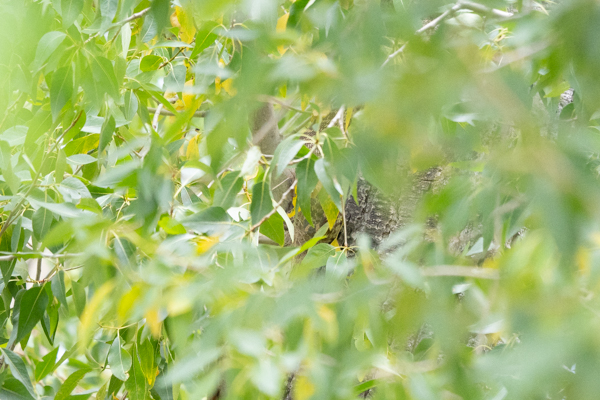
Hanging precariously down from a limb in one of the cottonwood trees 25 feet above the ground, the snake’s head was dipping directly into the blond, fluffy grass nest of the resident robins. We’d found the source of the frantic alarms.
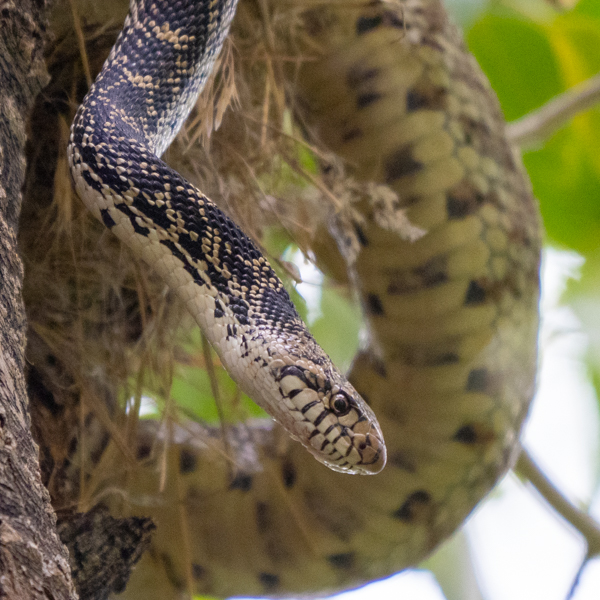
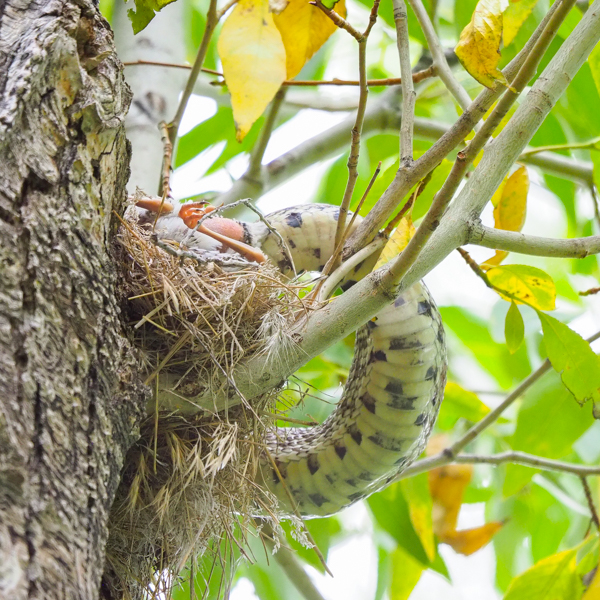
Its quite remarkable that an animal without arms legs fingers, toes, claws or a jet-pack can scale to these heights. And how did it know the nest was there? Had it been listening to the robins flit back-and-forth from the nest? Had it been watching, detecting something that Jenny missed despite her sit spot being situated only a few feet the base of the nest tree? (Jenny had seen and heard the robins flying back and forth for several days, but never heard the tell-tale sound of fledglings being fed). Had the snake smelled them? Young birds will typically defecate in fecal sacs— like a tidy, transparent little Ziploc bag full of white and black excrement—so that the adults can pick up their little poo-bombs and discard them some distance away in order to reduce tell-tale smells at the nest. However it did it, the snake had arrived at its destination. And we resigned ourselves to bearing witness to something we could not intervene in even if we wanted to.
The behavior of the adult robins was quite clearly a classic sign of distress. Bouncing (?) around like orange and gray ping-pong balls with their tails flared and wings drooping down, They shouted in vain as the snake had its way with their nest-bound young. Robins from all around heard their distress and flew in for support, chipping and fluttering in angst—and perhaps—sympathy.
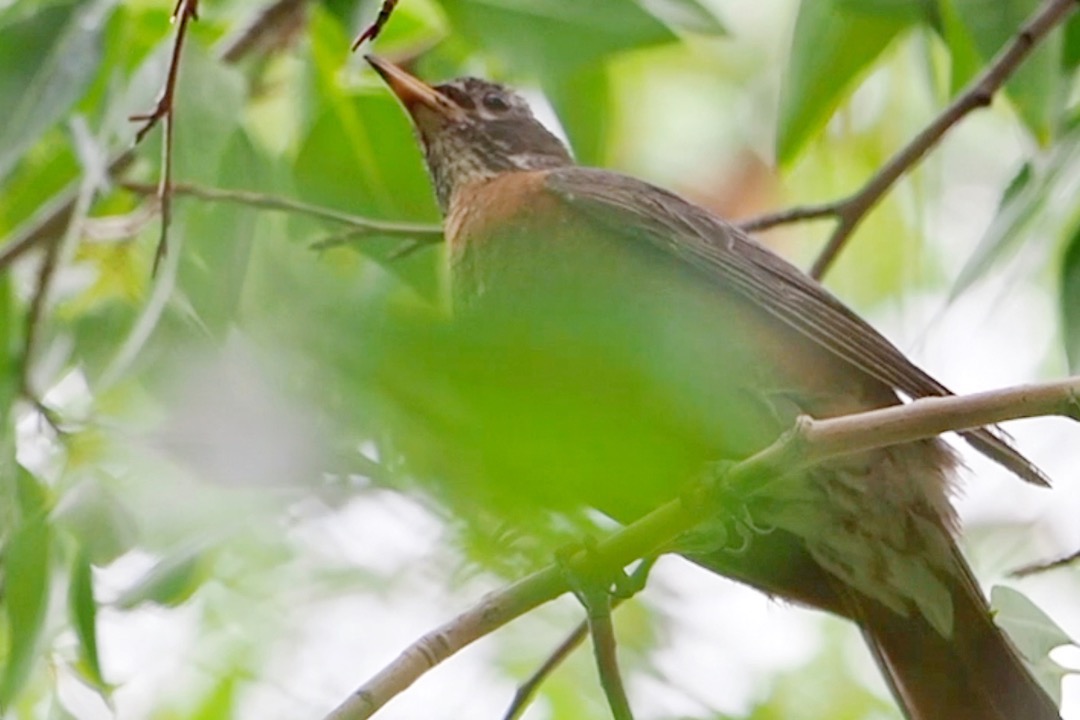
Witnessing a nest robbing event invokes in us a mix of fascination, horror, awe, and disgust. The snake slowly, systematically engulfs the living young, their feet wiggling and bodies squirming until they are suffocated. We look on, transfixed in our observation of the natural drama unfolding, but can’t deny that we feel more than a little sick to the stomach…
It’s easy to feel hate or disgust or fear towards the snake, and Jenny definitely felt an instinctive/innate feeling of fear creep up the back of her neck despite knowing the snake is no threat to us. Who doesn’t love baby robins and root for their survival? Or fear being devoured by a giant serpent? Yet those robins look just as terrifying to the worms and bugs they digest whole. Everyone is making a living. We know this, even if we don’t necessarily feel it in the moment.
And watching a snake in action is a rare opportunity, and pretty captivating, despite the macabre implications.
The color of the bull snake remarkably matched the tree background. With a checkerboard pattern on its back, black-brown on straw color with a belly lighter still and tinged with yellow—the snake is dressed for this kind of work. While its presence may escape the notice of humans like us, the robins see it, and send out the alarm, bringing all the neighborhood robins in for backup.
But once the snake gets a hold of the baby birds, there’s not much the robins can do. The snake wraps its unhinged jaw around the fledglings that are now several times larger than its head. Its throat, neck and indistinguishable thorax expand, and the scaled markings stretch apart like the patterns of an argyle sock stretched across an oversized pair of legs.
Based on the number and size of the lumps evident in the snake’s body, we estimated that there were two or three nestlings. Once the last bird was devoured and the nest empty, the snake sat stationary for some moments before starting to negotiate its descent.
Again, without climbing spurs, Spiderman silk or a jet pack, the bull snake tested various travel routes through the canopy and at one point, fell two or three vertical feet before catching itself on some thin branches. From that point on the over-stuffed snake seemed more cautious, moving a foot or two at a time, pausing for a minute or so and then proceeding another foot or two. It seemed to be calculating angles and distances.
It was fascinating to watch its slick body wrap around limbs and the textured bark, hugging the textured surfaces as the head cantilevered out into the ether. With its sallow-colored irises and large, gaping pupils, the snake bridged its way back to the ground, its glossy, black tongue flickering the whole while. After about an hour of observing, Jenny and little George went to clean up the remains of the abandoned dinner, Hobbes quit chewing on a stick, and big George watched the snake slither into a hole in the brush.
Once the snake hit the ground, it navigated along some large boulders and slipped away in a small cavity beneath. And there it all ended. As the constrictor hit terra firma, the last low pips of the robins faded and then ultimately ended.
We felt at once exhilarated to see something so dramatic in our own yard yet deeply empathize with the robins’ loss. We suspect that this pair of robins was able to fledge one chick from the nest in the gutter of our laundry shed earlier this summer, but we couldn’t be sure if it was the same pair. But one thing we can be sure of is that next year, as with every year prior to this, this or a snake looking very much like it, would be back for the harvest. It’s a tough life for robins in our yard…this is the second nest we’ve witnessed get raided by a bull snake. Both times the robins told us what was happening.
Jenny says that sometimes recognizing animal language is a curse because once you know how to listen to the signals the animals around you are sending, you can’t un-hear what they are saying. What do you think? Would you rather know that a life or death drama is unfolding in your yard, or remain blissfully ignorant?
If you are in the mood, you can watch the video of the encounter here. But we won’t judge if you keep scrolling…
If you’re new to this whole animal language thing, sign up for our free training Secrets of Animal Language: How & Why To Tune In To Wild Conversations.
Written by George Bumann & Jenny Golding. Images & video © Jenny Golding/A Yellowstone Life

